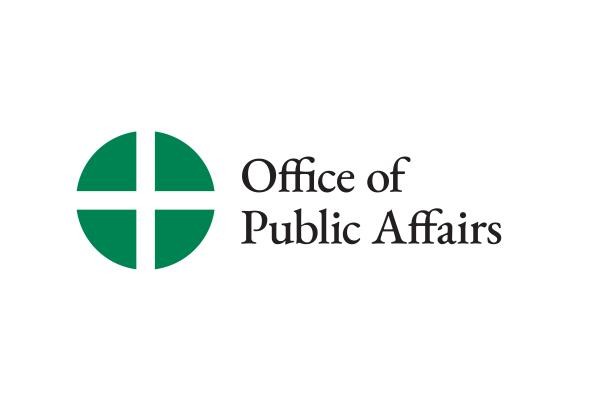Archbishop Aymond Offers ‘10 Ways Vatican II Shapes The Church Today’
WASHINGTON—The Catholic Churchmarks the fiftieth anniversary of the opening of the Second Vatican Council by BlessedPope John XXIII on October 11. The Council ran from 1962-1965, producing 16documents over the course of four sessions.
WASHINGTON—The Catholic Churchmarks the fiftieth anniversary of the opening of the Second Vatican Council by BlessedPope John XXIII on October 11. The Council ran from 1962-1965, producing 16documents over the course of four sessions. Over 2,000 bishops from around theworld participated. The Council introduced major reforms and stands among themost significant religious events of the 20th Century.
To honor this anniversary, as wellas the twentieth anniversary of the publication of the Catechism of the Catholic Church, Pope Benedict XVI called for aYear of Faith, beginning October 11 and ending November 24, 2013, to strengthenthe faith of Catholics and draw the world to faith by their example. ArchbishopGregory Aymond of New Orleans, chairman of the U.S. bishops’ Committee onDivine Worship, offers “10 Ways Vatican II Shapes the Church Today” to helpCatholics appreciate the Council and how it relates to the Year of Faith:
1. Vatican II presented a renewed vision of what it means to be the Church.The Council document Lumen Gentium onthe nature of the Church called the Church a light for the world and the sourceof salvation. The document Gaudium etSpes on the Church in the modern world said the Church shares the joys andsufferings of the world. Both documents refer to the Church as the People ofGod, reflecting a new appreciation of lay people that surfaced repeatedly atthe Council.
2. It called the Eucharist the source and summit of the faith. TheCouncil’s document on the liturgy, SacrosanctumConcilium, describes Holy Communion as the main source of God’s grace forCatholics. In the Eucharist, Catholics encounter the person of Christ. In thisway, it is truly the foundation of the Church.
3. It reformed the liturgy. The changes to the Mass, perhaps the mostwell-known conciliar reform, promoted “full and active participation,” which ledto the Mass being translated into the vernacular, or local language, andcelebrated as a dialogue between the celebrant and the congregation.
4. It said every Catholic is called to holiness and to be a missionary.The document on missionary activity, AdGentes, expanded the view of how the Church evangelizes. Missionaries wereno longer sent just to remote areas of the world to spread the Good News; now allCatholics play a role in evangelizing through their lives.
5. It emphasized the importance of the family. According to Lumen Gentium, the family is the“Domestic Church.” While the faith of the Church flourishes in parishes,dioceses and nations around the world, before all else is the family. It is thefamily that provides a strong foundation for each believer.
6. It reshaped the Church’s relationship with other Christians and otherreligions. At Vatican II, the Church adopted a spirit of respect anddialogue toward other faith traditions. Ensuing dialogues have built bridges ofunderstanding and strengthened relationships with Orthodox Christians, Jews,Muslims, Protestants and others.
7. It promoted collaboration. The document Christus Dominus encouraged “collegiality,” or collaboration withinthe Church. Bishops, priests, religious and lay people all work together in away that didn’t in the past. Bishops collaborate through episcopal conferenceslike the U.S. Conference of Catholic Bishops and state-level CatholicConferences. The Council also encouraged “subsidiarity,” by which authority isdivided up and decisions are made at the appropriate level.
8. It updated the Church… John XXIII saw Vatican II as a chance forrenewal in the face of the “signs of the times” and said he called the Councilto open a window and let in fresh air. This resulted in reforms that made theChurch more accessible to the modern world, such as Mass in the vernacular anddialogue with other believers, and the openness of the Council was reflected inthe presence men and women religious, lay people and even non-Catholics among itsofficial observers.
9. …but it also returned the Church to its roots. Vatican II alsoreformed the Church through a back-to-basics approach. This meant renewedappreciation for Scripture, the Church Fathers and the restoration of ancienttraditions such as the permanent diaconate and the multi-step process foradults joining the Church.
10. Then-Father Joseph Ratzinger (now Pope Benedict XVI) played asignificant behind-the-scenes role. The bishops at Vatican II were assistedby brilliant theologians. These assistants, or periti, included Joseph Ratzinger, who assisted Cardinal JosefFrings of Cologne, Germany. Father Ratzinger was involved in drafting speeches,shaping documents and defining the overall trajectory of the Council.More information on the Year ofFaith is available online: www.usccb.org/beliefs-and-teachings/how-we-teach/new-evangelization/year-of-faith/index.cfm
---Keywords: Year of Faith, Vatican II, Second Vatican Council,Bishop Richard Malone, Evangelization and Catechesis, USCCB, U.S. Conference ofCatholic Bishops, liturgy, Eucharist, Mass, reform, Catholic Church, modernworld
# # # # #MEDIA CONTACT ONLY:
Don Clemmer
O: 202-541-3206
Email

